Seven Endangered Seabirds Around the World
/https://tf-cmsv2-smithsonianmag-media.s3.amazonaws.com/filer/20110520102350Sterna_albostriata-106x150.jpg)
n the June issue of Smithsonian, Michelle Nijhuis documents the efforts to restore Atlantic puffins to the Maine coast after their almost complete disappearance at the beginning of the 20th century. Puffins aren't a threatened or endangered species, but the techniques developed to restore them to Maine have been successful in work with much rarer species, such as the Bermuda petrel. And this is especially good because there are far too many seabird species in decline.
"Seabirds" is a large category that encompasses a huge variety of species—including gulls, terns, petrels, pelicans, gannets, cormorants, pelicans, auks and, of course, puffins. What they have in common is that they breed on land and fly over the sea, sometimes for thousands of miles.
A quick search through the IUCN Red List of Threatened Species brings up 40 endangered or critically endangered seabirds (which is probably an undercount, and I didn't even bother to include "vulnerable" species), including 18 species of petrels, nine albatrosses and three penguins. That's too many to list here, but I've selected seven to highlight below. Looking through the whole list, however, brings up some commonalities. Birds that nest on remote islands—such as the Galapagos Islands, Christmas Island and Chatham Island—where invasive species have taken over tend not to fare well.
Name: Black-fronted Tern (Sterna albostriata)
Status: Endangered
Breeds: On South Island, New Zealand
Threatened by: Habitat destruction and introduced predatory mammals, such as weasels, hedgehogs, cats and dogs
Population: About 7,000 to 10,000 individuals
Name: New Zealand storm-petrel (Oceanites maorianus)
Status: Critically endangered
Breeds: On North Island New Zealand
Threatened by: Unknown, but introduced predators are likely a threat
Population: Unknown but tiny, with a few flocks of 10 to 30 birds having been recorded
Name: Magenta petrel (Pterodroma magentae)
Status: Critically endangered
Breeds: On Chatham Island, east of New Zealand
Threatened by: Introduced species, such as rats, pigs and possums; prior to 1900, local native peoples caught thousands of chicks for food
Population: 120 to 150 individuals; a 2008 study found that 95 percent of non-breeding adults are male, which suggests that, because of the low population numbers, they are having problems finding mates
Reason for hope: Scientists have been trying to establish a new colony site
Name: Abbott's booby (Papasula abbotti)
Status: Endangered
Breeds: Only on Christmas Island, but the bird once had a wider range through the Indian and Pacific Oceans
Threatened by: Loss of forest nesting habitat due to human activities such as mining; invasive ants
Population: About 6,000 individuals
Name: Galapagos penguin (Spheniscus mendiculus)
Status: Endangered
Breeds: On the Galapagos Islands, Ecuador
Threatened by: El Niño events; tourism; introduced predators, such as rats and cats; longline fishing
Population: The rarest of penguins, the population numbers only about 1,500 to 1,800 individuals, down from around 3,400 in 1971
Name: Amsterdam albatross (Diomedea amsterdamensis)
Status: Critically endangered
Breeds: On Amsterdam Island, in the South Pacific Ocean
Threatened by: Degradation of breeding sites by cattle, feral cats, longline fishing and avian diseases
Population: About 130 individuals, with 80 adults
Name: Tristan albatross (Diomedea dabbenena)
Status: Critically endangered
Breeds: On Gough Island in the South Atlantic Ocean
Threatened by: Introduced mice, longline fishing (the albatross was extirpated from Inaccessible Island due to feral pigs and from Tristan Island due to humans and rats)
Population: About 9,000 to 15,000 birds
/https://tf-cmsv2-smithsonianmag-media.s3.amazonaws.com/accounts/headshot/Sarah-Zielinski-240.jpg)
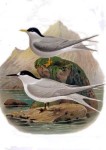
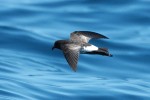
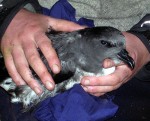
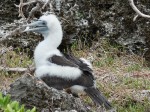

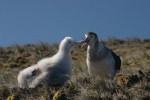
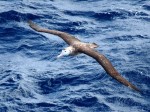
/https://tf-cmsv2-smithsonianmag-media.s3.amazonaws.com/accounts/headshot/Sarah-Zielinski-240.jpg)